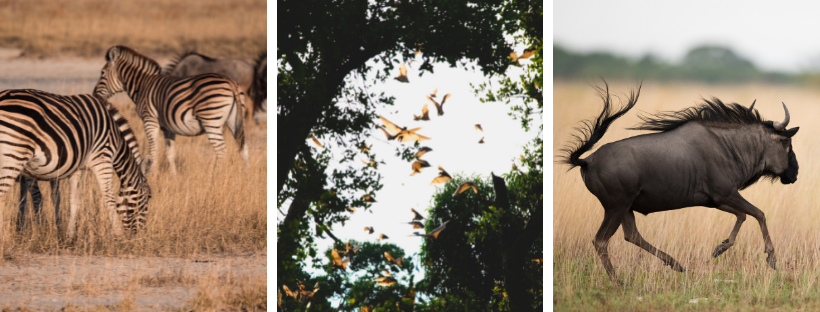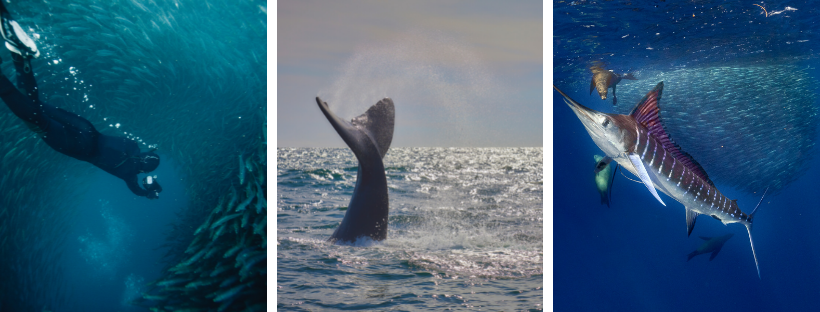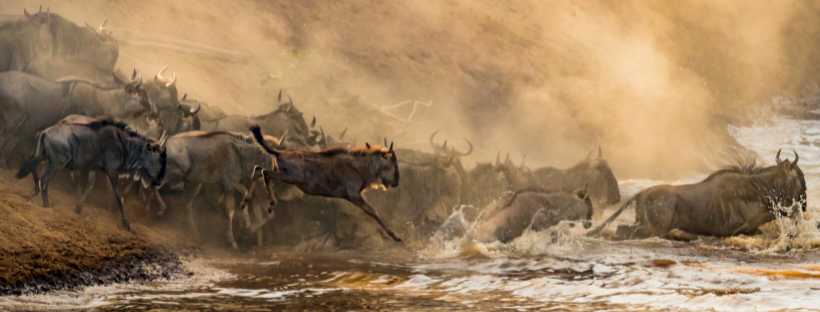5 spectacular Southern African migrations
The great migration of roughly two million wildebeest across the Serengeti in Tanzania, into the Maasai Mara in Kenya, and back again, is one of the greatest shows on earth. Wildlife documentaries like to show the frantic herds crossing the Grumeti River, where crocodiles lay in wait, or criss-crossing the Mara River but these river crossings are difficult to predict and witness.
However, despite the buzz surrounding the migration in the northern half of the continent, Southern Africa offers five lesser-known migrations that are well worth considering.
1. Zebra migration in Botswana
Botswana’s zebra migration occurs bi-annually when herds of zebra make their way from Chobe in the north to Makgadikgadi Pans in the south and later return. They move with the rainfall, searching for fresh grazing land and covering distances of over 1,000 kilometres. The zebra migration is most dramatic during the rainy season in Botswana, from December to March, allowing visitors to benefit from lower lodge rates and fewer people.

2. Fruit bat migration in Zambia
Roughly 10 million giant fruit bats migrate from West Africa to a forested area in Kasanka National Park between October and December, making this migration the largest migration of mammals on Earth. In the evening, these large bats – with wingspans of up to one metre – can be seen flitting in multiple directions, silhouetted against the African sky. They come to feast on milkwood, musuku, mufinsa, mahogany pods and other wild fruit that grow after the first rains.
3. Sardine run in South Africa
Every year, between May and July, winter storms cause an upwelling of cold water that gets pushed along South Africa’s coastline and massive shoals of sardines are driven north with it. Marine predators like dolphins, sharks, and Cape Gannets follow the travelling buffet of sardines, which has been described by BBC as ‘the greatest shoal on Earth’. Although not trailing the sardines specifically, numerous humpback whales can be seen at this time of year too as they migrate from Antarctic waters to warmer breeding grounds.
4. Blue wildebeest migration in Zambia
The second-largest wildebeest migration, of about 40,000 animals, takes place on the Liuwa Plains around November each year. While the scale is smaller than the migration in the Serengeti, it can be hard to tell as you watch thousands of galloping, grazing and snorting wildebeest move in a disarrayed unison across this wild space. Where there are herds of wildebeest you’ll also find lions, tracking them closely in anticipation of their next meal.

5. Southern Right Whale migration in South Africa
Hermanus and De Hoop, in South Africa, are two places that offer some of the world’s best land-based whale watching from up close. From around June to November, Southern Right Whales migrate to South Africa’s waters to give birth in sheltered bays. It’s not uncommon to see whales breaching, tail slapping or expelling seawater from their blowholes.
Happy travelling!
Diana
Sign up for more newsletters like this here: https://mailchi.mp/2e4afa50d15f/leopard


